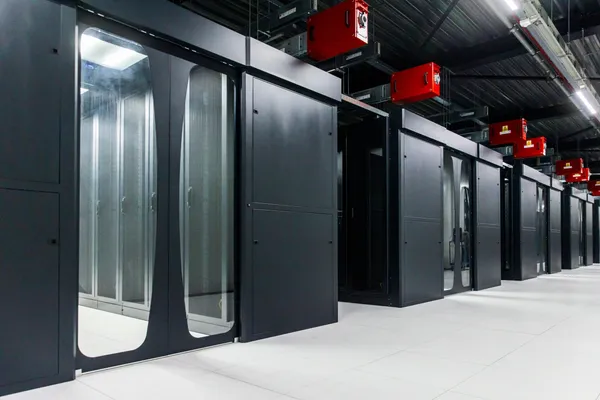The Value of Fiber Optics

Knowledge blog
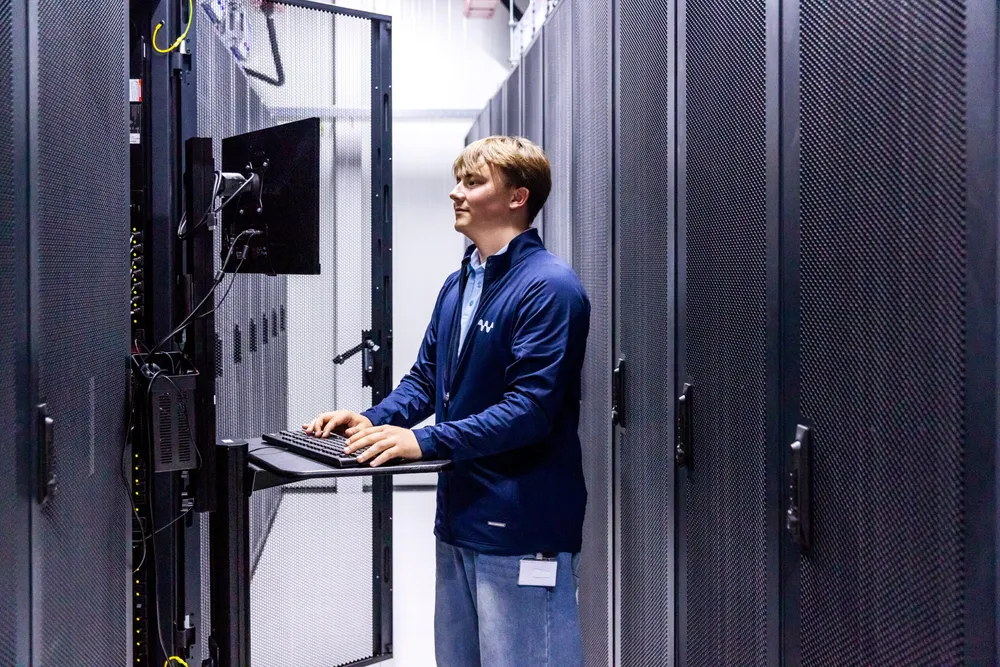
Fiber optic connections currently provide data center clients with the fastest Internet speeds for their IT infrastructures being deployed. By taking use of the vast bandwidth possibilities of fiber optic cables, businesses may be able to achieve data transmission rates that are both incredibly fast and ultimately reliable, significantly outpacing speeds and reliability provided by copper lines.
Executive Summary – Fiber optic connections provide companies the highest networking speeds, making it possible for them to reach data transfer rates of up to 10 Gbit/s. This is a substantial improvement over the transmission rates offered by conventional copper lines. Increased bandwidth made possible by fiber optics enables businesses to handle cloud-based applications, remote workforces, video conferencing and streaming, as well as remote data backup and storage with ease. As compared to traditional copper connections, fiber optics may offer major advantages. These advantages include enhanced speed, reliability, security, as well as enhanced connectivity to the cloud. Signal strength, network bandwidth capacity, network latency, and sustainability are other benefits that may be gained by using fiber optic technology. In addition, it uses less electricity and leaves a smaller effect on the environment than other means of data connectivity.
With the aid of light signals moving along optical cables, fiber optics represents a connectivity technology that enables the lightning-fast, ultra-low latency transfer of information over long distances including data, voice, and video/streaming.
Meeting Businesses’ Network Bandwidth Needs
In the last several years, there has been a significant increase in connectivity demand and the sharing of data. Many organizations have a growing need for additional network bandwidth, resulting from the process of digitalization that is gaining momentum in almost every industry but also due to the widespread adoption of for example artificial intelligence (AI) and machine learning (ML). The work from home trend and the use of video conferencing solutions represents another factor driving bandwidth growth, accelerating the need for the highest speed and lowest latency data transport. To exemplify this growing trend, in the Netherlands alone, 1.3 million new fiber optics were realized in 2022 according to the FCA (Fiber Carrier Association). For many organizations, fiber optics may provide the solution to meet those ever-tightening network needs.
Organizations can request a direct fiber optics powered connection from their premises anywhere in the Netherlands to Worldstream services in their self-owned data centers via Fiber to the Business. In the Netherlands, Worldstream’s fiber optics connectivity coverage extends all the way to the front door of every single zip code, including office buildings.
Organizations’ Network Bandwidth Hunger
We may ask ourselves, is there a genuine need for significantly increased network speed and bandwidth that would warrant the use of fiber optics as the connectivity medium of choice? Absolutely, without a doubt. We will provide some examples of why organizations may benefit from having the best possible network speed and bandwidth available for their offices.
- Emails containing large attachments – Organizations often send and receive numerous huge files over email. Some examples of these types of attachments are high-resolution photos, videos, PDFs, and design files. Bandwidth may be consumed by these files quickly, which can result in slower Internet connections and decreased productivity. Since there is ample bandwidth available with fiber optics, organizations will be able to transmit and receive these data in a more timely and effective manner.
- Supporting cloud-based applications – Many organizations run their day-to-day operations using cloud-based software, such as applications meant for customer relationship management (CRM), accounting, communication, as well as workflow and project management. Maintaining uninterrupted and high performing connections with these SaaS (Software-as-a-Service) applications is essential for organizations. For these software programs to operate correctly though, a consistent and reliable connection to the Internet is required. With fiber optics, organizations will have access to significantly enhanced bandwidth, resulting in more effective use of the applications with improved uptime.
- Supporting a remote workforce – The COVID-19 pandemic has intensified the trend of employees doing their jobs remotely, which has resulted in additional needs for more network bandwidth. Since more employees are choosing to work from home, organizations have a responsibility to ensure that these workers have enough network bandwidth available to seamlessly access corporate resources and interact with their coworkers. Fiber optics has the characteristics to make this possible.
- Video conferencing and streaming – Video conferencing has developed into an important tool for organizations to use to interact with their clients, partners, and employees who may work remotely. Streaming live events and webinars has also become an increasingly common approach for organizations to interact with their customers. Each of these activities may require considerable amounts of network bandwidth, while organizations may want to enhance the quality and reliability of their webinars, online events, and video feeds. With increased network bandwidth available, fiber optics will make this possible.
- Remote data backup & storage – As more and more companies move their data storage to external cloud environment and data centers, they will have a growing need for additional bandwidth to upload and download data as rapidly and safely as possible. When having more network bandwidth available as an organization, tasks like backing up data and restoring it will be completed more quickly and reliably. The use of fiber optics allows organizations to do so.
Bandwidth Demand Use Cases: Education, Healthcare, Manufacturing
The technology of fiber optics is capable of satisfying even the most demanding requirements imposed on networks and businesses. To further explore and illustrate where the fast-expanding need for low-latency network bandwidth is coming from, it could be helpful to take a cursory look at the requirements for networking posed by certain market sectors, such as the educational and healthcare sectors as well as the manufacturing industry.
Learning resources are increasingly being made accessible digitally in the education sector. Also, a student monitoring system is often accessible remotely by both students and parents. Moreover, an educational institution’s network may be used to operate equipment like beamers and surveillance cameras. Next to that, educational institutions may need to interact with other educational institutions as well as organizations that they keep strong links with.
It is also not out of the blue that the healthcare sector has an ever-expanding requirement for low latency network bandwidth capacity. Patient records must be kept and accessed again on occasion by various authorized healthcare workers including doctors and nursing staff. Also, contemporary technologies that rely on network traffic are increasingly being employed, such as robotic surgery and connected systems allowing doctors to work together remotely during operations. The increasing need for quick, reliable network access is also considerably being aided by home automation and the use of Internet of Things (IoT) equipment in hospitals, nursing homes, and other healthcare institutions. Moreover, online patient portals and e-health systems are making it possible to assist patients more and more remotely. In other words, the healthcare industry tends to have a huge and growing requirement for low latency network bandwidth capacity.
Yet another fine example of a sector anticipated to generate an increasing amount of data while the need for fast and reliable network traffic is noticeably increasing is manufacturing. In the years to come, there will be an emphasis on ‘smart manufacturing’ through process automation, especially with the use of robotics, as Industrial Internet of Things (IIoT) devices begin to penetrate mainstream markets. The use of IIoT technologies may boost productivity significantly but it will also have its impact on transporting data through the networks of manufacturers. Network bandwidth is probably even the most important consideration when thinking about IIoT adoption. Robotics and other connected automation systems may generate enormous amounts of data while utilizing a disproportionate amount of network bandwidth. When discussing the network demands resulting from IIoT, also private 5G comes to mind but fiber optics provides significant benefits over private 5G on a variety of levels.
Fiber Optics: Key Technological Aspects
To justify a possible choice for fiber optics as an organization, it might be good to also know exactly what this technology looks like and how it works. With fiber optics, the light signals are transmitted via optical fibers, which are clear, thin, flexible wires composed of glass or plastic. Fiber optic cable is in fact made up of a variety of glass fibers. Another glass layer, which we refer to as cladding, is encircled by this glass fiber core. The cladding is protected by a layer that we refer to as the buffer tube, and the jacket layer serves as the last line of defense for each individual strand. So, the core, cladding, and jacket make up an optical fiber’s essential parts:
The core of an optical fiber is a cylindrical glass structure where light signals are conveyed. Light only flows through the core because it is formed of high-purity glass, also called silicon dioxide, while it has a greater refractive index compared to the cladding.
An outside coating layer called cladding surrounds the core and reflects light back into it, keeping it from escaping the core. The light signals are kept in the core and pass down the fiber with little loss or scattering because the cladding is comprised of less pure glass and has a lower refractive index than the core.
A jacket is an external layer of protection for optical fibers that is constructed of a durable, flexible polymer, such as polyvinyl chloride (PVC) or plastic. The jacket, often referred to as a sheath, shields the core and coating from abrasion, moisture, and mechanical harm.
There are several types of fiber optic connections available for organizations. These may include the following:
Fiber to the Node (FTTN) – The Internet connection is delivered via pre-existing copper connections from a node in an office building reached by a fiber cable.
Fiber to the Curb (FTTC) – It’s a technology in which copper wires are used to connect fiber optic cables to a location close to a company.
Fiber to the Building (FTTB) or Fiber to the Premises (FTTP) – The fiber connects straight into an office building.
This is what fiber optic technology looks like in conjunction with business usage, but how does the communication from A to B work exactly? We’ll explain. A receiver, a transmitter, and an optical cable serve as the three essential components of a fiber optic system. The optical fiber serves as the transmission medium. The following is in fact a simplified explanation of how fiber optics function and transmit their communication signals, broken down into five steps:
Step 1: Transmitter – The fiber optic transmitter takes an electrical signal and changes it so that it may be received as an optical signal. This is accomplished by modulating a laser or LED (Light Emitting Diode) with the electrical signal to generate a sequence of light pulses that correspond to the data that is being conveyed. This may be done with a laser as well.
Step 2: Optical Fiber – An optical fiber is a thin strand of glass or plastic that is intended to route light pulses across long distances without considerable attenuation or loss of data quality. Optical fibers may be either rigid or flexible. A cladding layer encircles the core of the fiber, and it is this cladding layer that is responsible for reflecting light back into the core so that it does not escape.
Step 3: Light Propagation – When the light pulses go farther down the fiber, they hit the cladding layer, and they are continually reflected back into the core. This is the first step in the light propagation process. This phenomenon, which is known as complete internal reflection, makes it possible for light to traverse extensive distances with just a little amount of attenuation.
Step 4: Receiver – The receiver is located at the other end of the fiber and is responsible for converting the optical signal into an electrical one. The light pulses are detected by a photodetector, which then transforms them into an electrical current in order to accomplish this goal. After that, the electrical current is amplified and put through processing so that the original data may be recovered.
Step 5: Repeaters – To circumvent potential signal degradation, it is possible to install repeaters at various points along the length of the fiber optic cable. These repeaters may both amplify and regenerate the optical signal. The optical signal is retransmitted by these repeaters, which restores both its strength and its quality while also enabling it to travel farther down the fiber optic line.
Fiber Optics vs Copper Lines
Copper cables, the same sort of wires that convey speech over a traditional telephone line, are used by both DSL and cable Internet to transfer data. The fact that this technology has been around for so long is evidence of its quality, but fiber optics is really needed to meet the stringent requirements set by the example use cases previously discussed, which are just a few instances of the many use cases and industries where fiber optics can make a difference. Copper wires may considerably attenuate and distort the voltage signals they carry, as opposed to fiber-optic cable, which transmits light with very little attenuation and distortion. When copper cable communication distances grow, these issues get worse.
As copper connectivity faces higher attenuation and distortion over longer distances, a signal may get worse the farther an Internet user is located from a source data center node and the services delivered by an Internet Service Provider (ISP) or Infrastructure-as-a-Service (IaaS) provider such as Worldstream. Attenuation and distortion may worsen along with a decrease in Internet speed. Due to this issue, the speed range of copper-based DSL and cable Internet connections is always limited. The amount of data that copper connectivity can manage usually affects the Internet speed as well. Instead of utilizing electricity to carry data, fiber optic connectivity uses modulated light. By doing so, fiber optics offer a much wider bandwidth capacity since it is not limited by the physical limitations of electricity flowing through metal. Also, fiber optic connections are less prone to electromagnetic interference, which may weaken signals and slow down data transmission rates.
Fiber optic links often work several times faster than “outdated” copper wire connections. Yet, since both DSL and cable Internet speeds improved over time, in some cases it might still be difficult to tell the difference between these two kinds of Internet connections, we sure need to be realistic about that. Why? It also depends on the network operator. The hardware on both sides of the fiber optics connection has a major impact on the highest Internet speed that may be achieved. So, depending on the exact situation, copper-based connections could sometimes be able to attain speeds that are comparable to fiber optics. When it comes to data transmission speed and bandwidth capacity though, fiber optics is usually outperforming copper lines significantly. The fiber optic connections that Worldstream can offer from its data centers to every ZIP code and business in the Netherlands, at least, do. On a worldwide scale, the choice between copper lines and fiber optics will ultimately come down, of course, to specific requirements and unique capabilities and limitations of the application, as well as the accessibility and cost of each solution.
Key Benefits Fiber Optics for Businesses
Business connectivity utilizing fiber optics has various benefits over the use of conventional copper connections including increased speed and reliability and security. Fiber optics has more advantages to offer though. Key benefits include the following:
Speed – The available options for fiber-optic connectivity may vary from 5 Mbit/s all the way up to 10 Gbit/s, which makes it much speedier than even the highest speed copper Internet connections. Even during periods of high demand for Internet access, an organization should not encounter any sluggishness while trying to utilize the Internet. This would be true even during peak hours.
Access to the cloud – The cloud is an important component of the infrastructure of many organizations. It serves a range of purposes, including application hosting, customer relationship management (CRM), workflow management, communication tools, and data storage, to name a few. Fiber optics, owing to the speeds at which it operates and the solid capabilities it has, makes it possible for businesses to have faster access to the information and applications that they have deployed in the cloud. And as companies move more and more of their services to the cloud, having connectivity in place that is capable of handling all this data traffic might become even more essential for businesses.
Reliability – Internet connections based on fiber-optic technology are not impacted by poor weather conditions, which may interrupt or distort data transfers that are carried out through copper cable. In contrast, copper wiring can be disrupted or damaged by such circumstances. As long as the fibers are not physically damaged, it is also impossible for people or electrical currents to interfere with the transmission of signals via fiber. Connections to the internet that are not dependable might, in the end, cause huge losses for enterprises.
Signal strength – When using traditional broadband connections like DSL or Ethernet over Copper, the quality of the signal might suffer as the user moves farther away from the switch. This is because typical broadband connections employ copper wiring. The strength of the signal does not degrade nearly as quickly with increasing distance when it is carried via fiber optic Internet. Businesses that make use of large premise spaces could benefit from a boost in signal strength across the whole of the facility.
Network bandwidth – While businesses using fiber optics may not have access to a genuinely limitless amount of network bandwidth capacity, the amount of bandwidth that is actually available is far higher, and download rates do not drop even as bandwidth demands rise.
Network latency – Fiber optic connections remove many of the latency difficulties that users might face on other connectivity types, particularly when downloading or uploading video or high-definition resources. This is especially true when downloading or uploading videos. The possibility to shift more applications to the cloud; better voice quality for VoIP customers; improved communication amongst workers; and the downloads and uploads of enormous files without interruption are some of the business advantages that might result from minimizing network latency.
Network security – An organization’s defenses against cybercrime may be significantly strengthened by upgrading to a network connection that uses fiber optic technology. Even if upgrading to fiber optics won’t eliminate all of an organization’s threats, it is unquestionably a significant way of defense that should be considered.
Sustainability – Another advantage of using fiber optics is that it consumes less power than other technologies. This may contribute to the sustainability of an organization’s overall efforts. As the transmission of data through fiber optics relies on light rather than other forms of energy, it has a lower ecological footprint than other data connectivity methods.
Worldstream’s ‘Fiber to the Business’ Offering
Organizations may obtain a direct fiber optics powered connection from their premises anywhere in the Netherlands to Worldstream services in their self-owned data centers via Fiber to the Business. In the Netherlands, Worldstream’s fiber optics connectivity coverage extends all the way to the front door of every single zip code, including office buildings.
Backed by its proprietary global backbone including an SDN/NFV network featuring EVPN VXLAN technology to achieve ultimate deployment flexibility, Worldstream offers an extensive Infrastructure-as-a-Service (IaaS) solutions portfolio to clients globally, including highly customizable bare metal dedicated servers, intelligent DDoS protection, colocation, public cloud, private cloud, public cloud on-ramps, block and object storage, firewalls, and more. You can find these IaaS services here.
You might also like:
- 7 Benefits of Using Public Cloud Infrastructure.
- The difference between Bare Metal Cloud and Dedicated Servers.
- What are your options against a growing number of DDoS attacks?
Have a question for the editor of this article? You can reach us here.

Latest blogs
The Ultimate Gaming Latency Guide: How to Eliminate Lag and Maximize FPS
Knowledge blog

Growing smarter with less maintenance

Knowledge blog

Worldstream and Nokia Join Forces for Next-Gen DDoS Protection

News
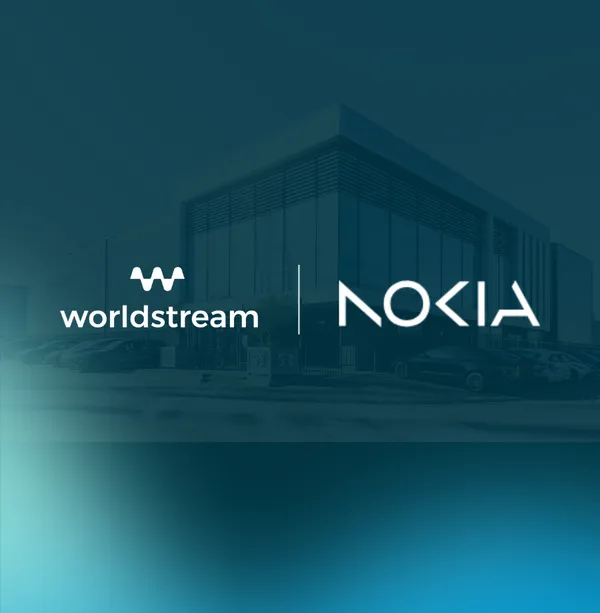
Worldstream unveils new positioning and offers customers more control over their digital infrastructure

News
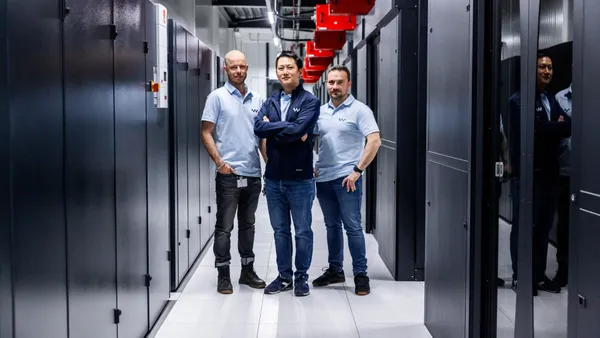
5th Gen AMD EPYC 9355P – Now Live at Worldstream

News
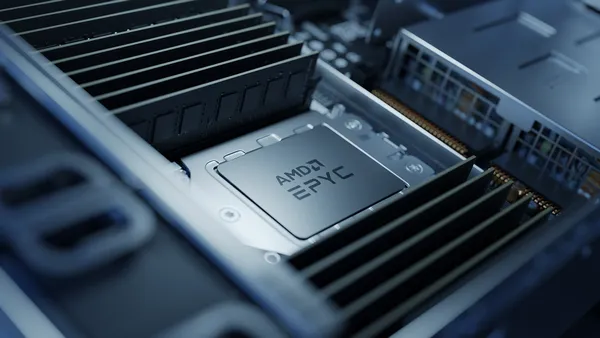
Nokia strengthens Worldstream’s hosting security with advanced DDoS Protection in the Netherlands.

News
